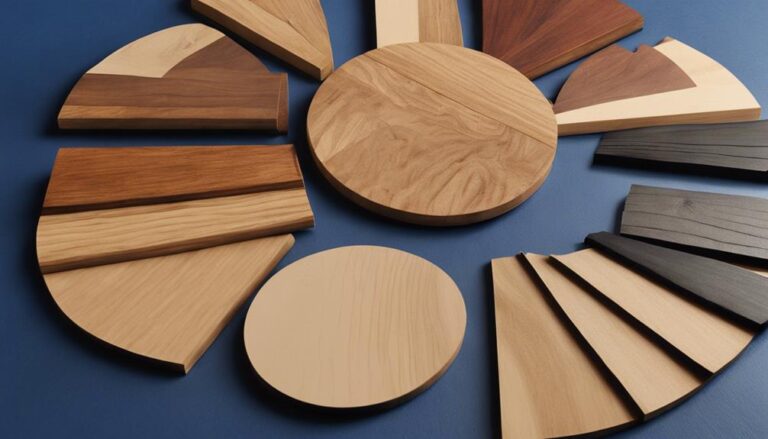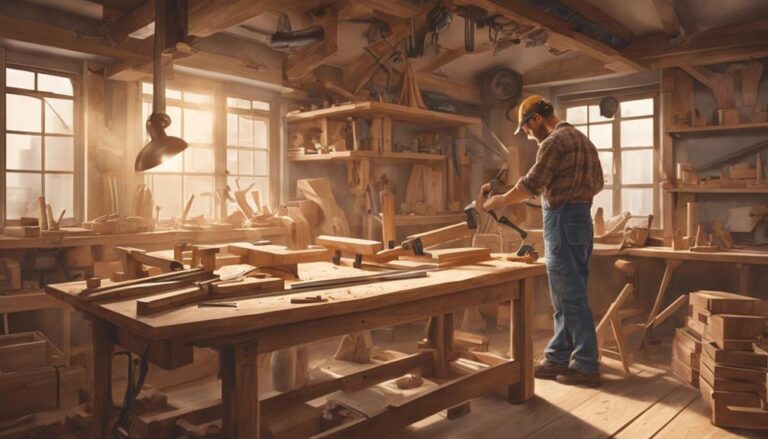Navigating the sea of wood finishes for your table can feel like charting through uncharted waters, where each choice makes a significant impact on the final destination. You’ve got to weigh your options carefully, considering the wood’s personality and how it’ll interact with varnish, polyurethane, stains, lacquer, or water-based finishes.
It’s not just about the look; it’s also about the table’s resilience against the storms of daily life. But how do you pick the right one that balances beauty with durability, especially with budget and skill level in the mix?
Let’s explore the crucial considerations that’ll guide you to make an informed decision, ensuring your table not only stands out but stands the test of time.
Contents
Considerations Before Deciding
Before diving into the selection of a wood finish for your table, it’s crucial to consider the wood’s type and porosity, as this will directly influence the suitability and performance of the finish you choose. Assessing the wood type and its inherent porosity ensures that you opt for a finish that’s not only durable but also enhances the table’s natural beauty.
A finish that’s too dense for a highly porous wood, for instance, may not provide the desired level of protection or durability. Furthermore, factor in your budget constraints to identify a protective finish that doesn’t break the bank.
The ease of application is another critical consideration, especially if you’re applying it yourself. A finish that aligns with your skill level can significantly affect the result, ensuring your table’s long-lasting durability and aesthetic appeal.
Types of Wood Finishes
When selecting a wood finish for your table, it’s essential to understand the differences between various types, such as penetrating oils and surface finishes, to ensure you choose one that best suits your project’s needs.
Penetrating wood finishes, including linseed or tung oil, delve into the wood fibers, offering a natural look and enhancing the wood’s inherent beauty.
For a robust protective coating, surface finishes like varnish or polyurethane form a hard layer on top, guarding against scratches and spills.
Stains, meanwhile, accentuate the wood’s grain and color variation, while lacquer provides a glossy, durable finish.
Water-based wood finishes stand out for their quick drying time and minimal environmental impact, making them an excellent choice for eco-conscious projects.
Application Techniques
Understanding the differences between types of wood finishes is crucial, and equally important is mastering the application techniques to ensure your table gets a flawless finish. Each technique offers its advantages, depending on the material you’re working with.
| Technique | Best for | Key Benefit |
|---|---|---|
| Brushing | Varnishes, Paints | Precision in application |
| Wiping | Oils, Stains | Enhanced wood grain display |
| Spraying | Lacquers, Polyurethanes | Quick, even coverage |
Brushing allows for detailed work, especially with varnishes and paints, ensuring a smooth, even coat. Wiping with oils or stains can highlight the natural beauty of the wood, penetrating deeply for lasting protection. Spraying is your go-to for lacquers, providing a swift, uniform application. Finally, rubbing the finish in can achieve that perfect sheen, making your table not just a piece of furniture but a centerpiece.
Maintenance and Care
To safeguard your table’s finish and ensure its longevity, regularly dust and clean the surface with a soft, dry cloth to avoid the accumulation of dirt and debris.
Implementing protective measures is crucial for maintaining the aesthetic and protective qualities of the wood surface. Utilize coasters, placemats, or trivets to shield your fine furniture from heat and scratches, which can compromise the integrity of wood finishes that tend to dry quickly.
For deeper care, consider applying a furniture polish or wax designed for your specific wood stain, using a brush for even application. This not only enhances the luster but also fortifies the finish against daily wear.
Moreover, rotating decorative objects and table settings can prevent uneven light exposure, ensuring uniform aging and maintaining the woodworking project’s beauty.
Common Mistakes to Avoid
While regular maintenance and care are essential for preserving your table’s finish, it’s equally important to avoid certain pitfalls during the application process.
| Mistake | Consequence | Tip |
|---|---|---|
| Applying in direct sunlight | Uneven drying, damage | Choose a shaded, well-lit area |
| Rushing between coats | Poor adhesion, compromised durability | Allow full drying time between layers |
| Using incompatible finishes | Negative reactions, flawed finish | Research and match finishes correctly |
| Overloading the brush | Drips, runs, uneven coverage | Use minimal oil or finish on the brush |
Applying a wood finish requires patience and attention. Each coat should protect and enhance the natural beauty and durability of the wood surface. Avoid these common mistakes to ensure a smooth, durable, and protective wood finish.
Conclusion
In wrapping up, remember, that selecting the right wood finish for your table hinges on understanding your material’s needs and your project goals. Whether you’re leaning towards varnish for its durability or prefer the ease of water-based finishes, ensure you’re applying your choice adeptly to achieve a professional look.
Regular maintenance can’t be overlooked; it’s crucial for the longevity of your finish. Avoid common pitfalls by thoroughly prepping your surface and choosing products that align with your skill level.






